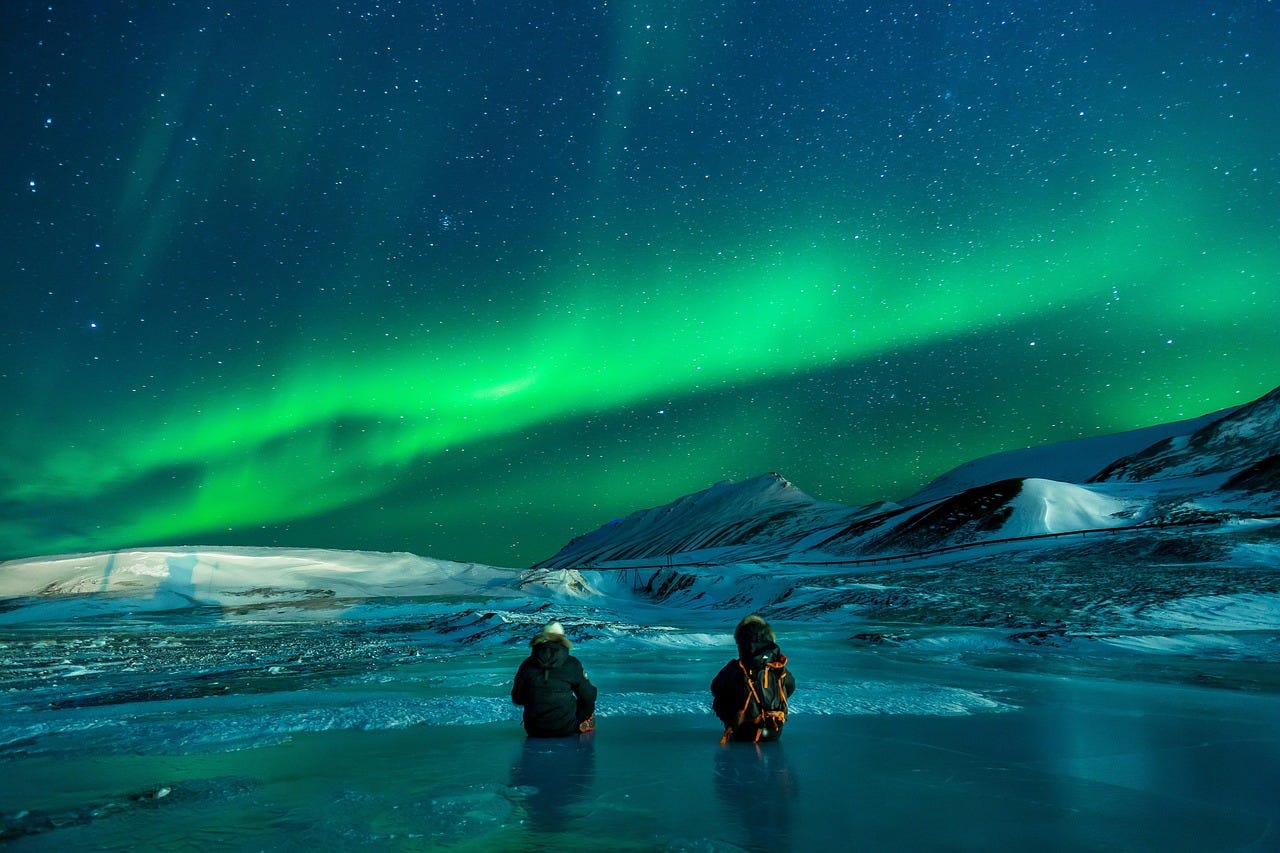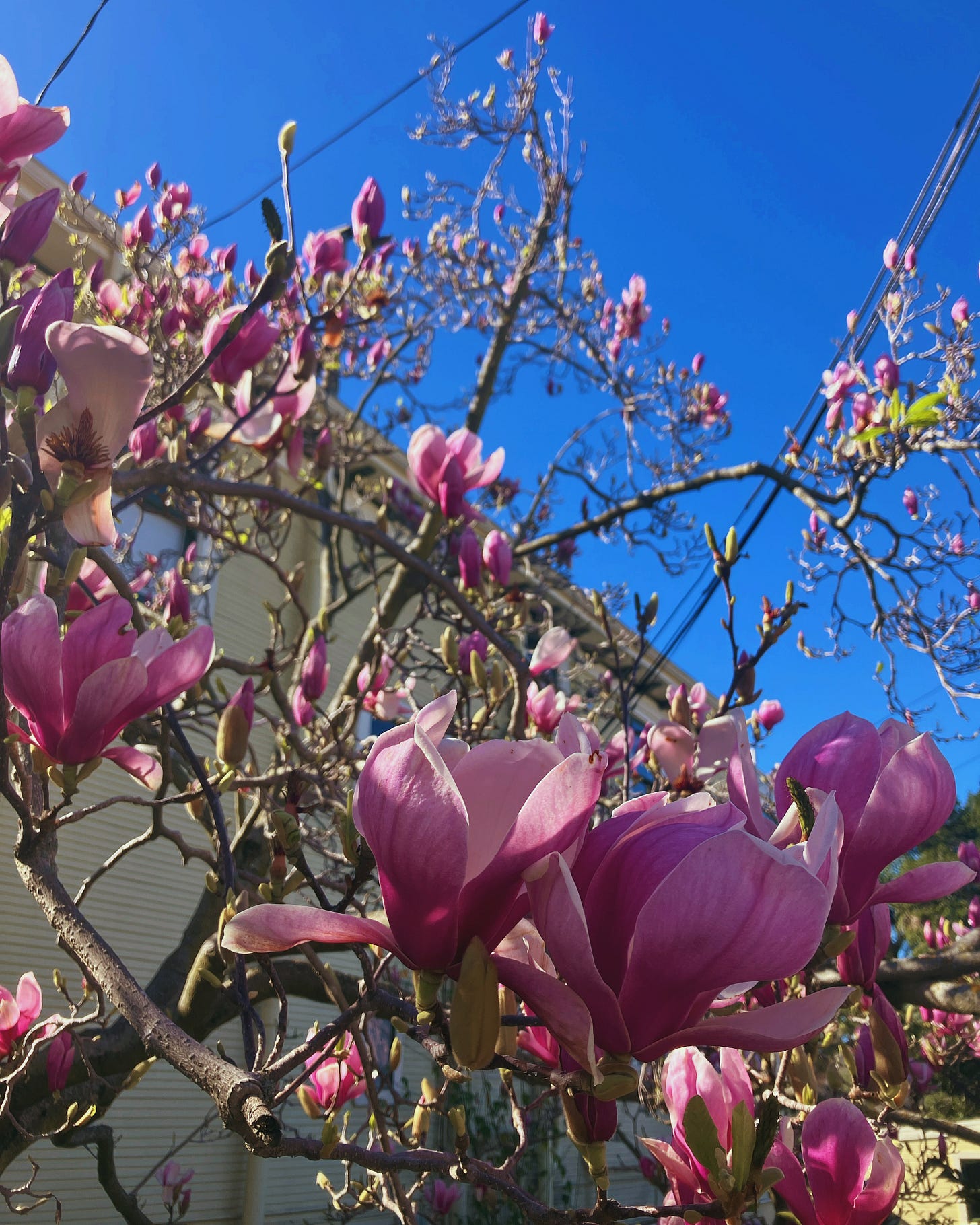Some writing updates:
Have you pre-ordered my new novel, Select Screen, yet? You probably should.
I will be going to AWP in Los Angeles for their official book fair on Saturday, March 29th and you can find me at the Whiskey Tit booth pretty much all day!
Every year I lived in the Bay Area, I marveled at the magnolias. They bloom so early, in January and February, and look so unlike the Southern magnolia trees I grew up with in Texas. When I lived in the Sunset neighborhood of SF, I’d use my ID to get into the botanical garden for free and lay on the grass to stare at the pink and white blooms. When I moved to Berkeley, I was thrilled to see so many magnolia trees dotting people’s yards and, when I went on my daily walk, I could watch their progress from bud to bloom. To leave the Bay Area when the magnolias were in bloom felt unbearably poignant.
I read one book in February. As it turns out, when you’re turning your life inside out and moving across the state, there isn’t much time for reading. And I’ve spent the last few weeks with most of my books in boxes, others on their way to Half Price Books to find new readers, and the small stack I carried with me is still sitting on my nightstand, mostly untouched. But the singular book I chose to read resonated with me so deeply in this current moment, that I felt reassured I’d brought the right ones.
A Woman in the Polar Night by Christiane Ritter is a classic memoir of a female artist’s journey to join her husband, a hunter in Spitsbergen, at the edge of the endless polar night in 1934. Ritter takes a cruise ship with vacationers, all eager to glimpse an iceberg or polar bear, and disembarks straight onto the frozen shore, much to the horror of everyone aboard, except for the sea captain, who happens to know her husband and is both horrified and bemused by the entire endeavor.
The reality of her time there quickly sets in. Her husband has invited another young hunter, Karl, to spend the winter with them and help him run the fox and bear traps. Karl has a sunny disposition but secretly suspects the “housewife” will go mad during the 130 days of night. Her husband has also not prepared the cozy nest she was promised in his letters, perhaps because he did not expect her to come.
“I look round for a bed. I am seized by a secret horror of the two bunks with their hard straw mattresses. Who knows what wild hunters last slept there.
’Where is the boudoir you promised me in your letter?’ I ask my husband.
’It's not built yet,’ he replies. ‘First we have to find planks. The sea sometimes throws them up.’”
Quite quickly, the stove gives out, their stores are depleted, and they are surviving almost solely on seal meat for their much needed “vitamins.” Ritter jokes that she should definitely have gotten scurvy by now as she makes yet another stew of the unctuous meat.
Her husband and Karl leave, sometimes for a week or more, to hunt and she’s left to mend, clean, write in her journal, and experiment with baking bread, all the while hoping they return, and she is not abandoned to a solitary fate on the ice. In the evening, they play cards, tell stories, and listen to the wind howl.
Ritter explains, “Svalbard, or ‘Cold Coast,’ is the old Norwegian name for Spitsbergen.” Spitsbergen, I discovered, is the only permanently populated island in the Svalbard archipelago. The name Svalbard might be familiar if you’ve spent any amount of time on TikTok and come across the account of Cecilia Blomdahl who posts videos of life on Svalbard with her husband and their dog (she has also written a book called Life on Svalbard). I was not aware I already had a slight working knowledge of Svalbard when I began reading A Woman in the Polar Night, but was pleased I had drawn a somewhat accurate picture of the landscape and the Northern Lights in my mind’s eye.
Ritter’s memoir is both the story of a German housewife’s evolution into a hardened Arctic hunter and a haunting description of the “lunar landscape” and her time there. Ritter was 36 when she joined her husband on Svalbard and she lived to be 103. It makes you wonder if the temperament of someone willing to face the extremities of the natural world is a beneficial one for longevity. She muses, “Why have I been so shaken by the peacefulness of nature? Do we really need the force of contrast to live intensively?” before adding, “Perhaps in centuries to come men will go to the Arctic as in biblical times they withdrew to the desert, to find truth again.” As someone who just moved to the desert, I can’t disagree that the stark landscape provides opportunity for intimate self-reflection whether you wish it or not.
“How varied are the experiences one lives through in the Arctic. One can murder and devour, calculate and measure, one can go out of one's mind from loneliness and terror, and one can certainly also go mad with enthusiasm for the all-too-overwhelming beauty. But it is also true that one will never experience in the Arctic anything that one has not oneself brought there.”
Now that we are somewhat settled in, I can begin unpacking my books and making time for reading again. I just started More Days at the Morisaki Bookshop by Satoshi Yagisawa after enjoying the first iteration and it’s just the light-hearted read I need to ease myself back into the reading life once more.




I've had this one on my shelf for a little while now and hadn't gotten around to reading just yet -- this is totally a sign!